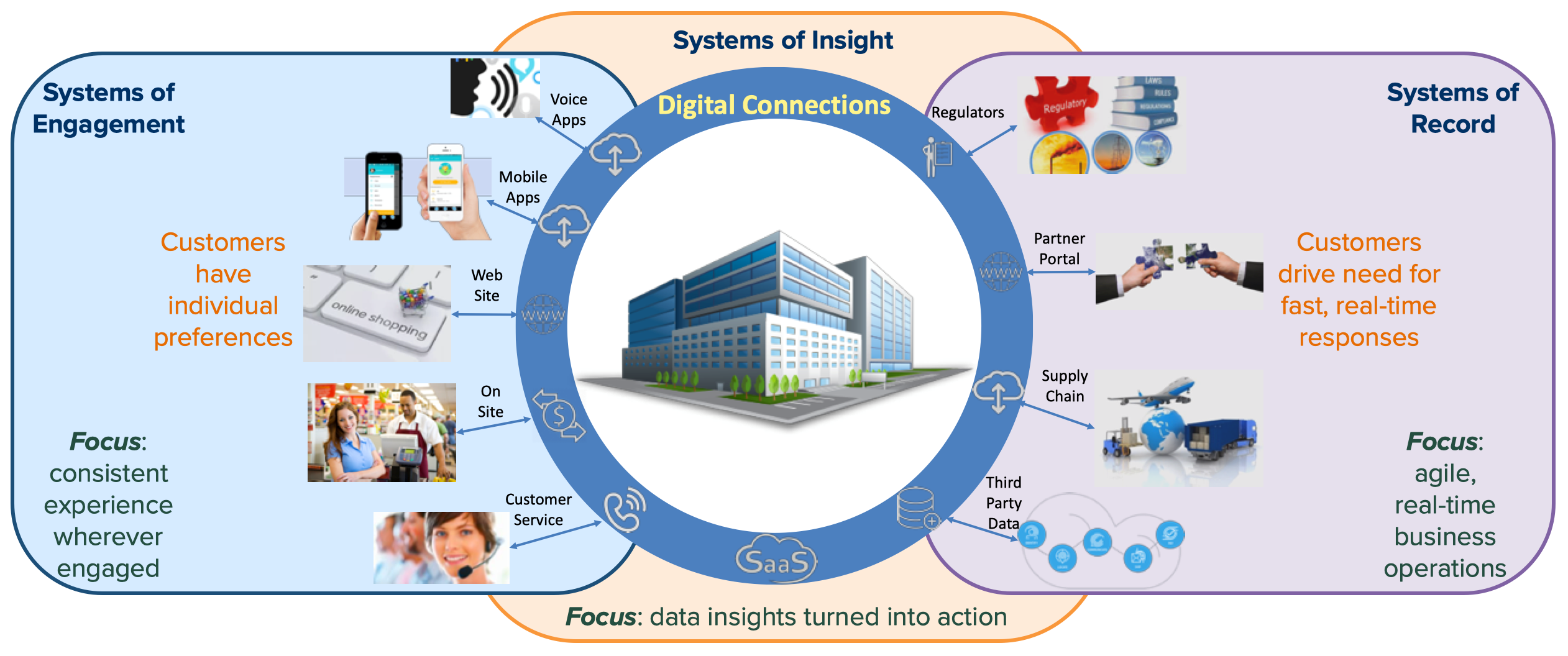Digital Transformations Focus On Engaging Customers And Simplifying Business Operations
Digital technology changes people’s expectations about what is possible. Smartphones, tablets, data streaming, and more have changed how we as customers view companies we deal with – and decide whether or not we will continue to do business with them.
Responding to shifts in customer behaviors due to technology, competitors and fresher, more attractive or interesting methods of engagement have driven most digital transformation efforts. It has become necessary to meet customers on their terms and understand their preferences, even as they change.
Adapting to changing customer expectations has a ripple effect through the business. First is the impact on the systems customers interact with when they engage a company touchpoint. This needs to be a consistent and uniform experience tailored to the preference of each customer. This experience is increasingly difficult to tailor as customers use a variety of technologies, including web, text, and voice, to interact with a business; usually each of these touchpoints is driven by a different technology and business application. Providing a consistent, uniform, personalized, mobile experience in these circumstances is a challenge.
Digital transformation goes deeper than customer engagement. Operationally, business systems that process a company’s work and transactions are difficult to adapt to provide the customized experience people have come to expect. Employees and suppliers, based on their own experience as customers, are also developing expectations that the systems they use at work should provide the same experience they want as customers.
While marketing, customer service, and operations struggle with customer engagement and shifting expectations and tastes, the need to transform legacy IT systems and technologies becomes the overarching challenge.
Digital Business Transformations Are Enabled By A Digital Transformation of IT
Digital transformation goes beyond engaging customers and employees. Fundamentally, it means creating an accurate digital representation of the physical world.

Systems of Engagement
These are systems with which customers interact. The challenge for IT is to provide real-time, uniform, consistent, personalized experiences to customers. While most companies have made progress with mobile apps and websites, new interfaces, like voice, continue to appear.

Systems of Record
These are systems which record the operational events of the business. The challenge for IT is to keep these systems correct, consistent, and operating in real time. Too many existing systems of record operate with their own version of data and rules, which may be incorrect or inconsistent.

Systems of Insight
These are systems that use customer and operational data to develop insights in real time. The challenge for IT is to overcome IT systems complexity with an environment that shares uniform, correct, and consistent data and rules across all business systems to enable analytics.
Three categories of systems need to work together to form a seamless and complete digital representation of real-world business events, as in Figure 1.

Figure 1: The three categories of business systems
Increasingly, these systems are expected to support real-time, automated, digital business. Which is why InfoNovus invented Instant IT. InfoNovus Instant IT digitally transforms IT so the business can design the business systems of engagement, record, and insight they want, get applications instantly generated by computer, and manage, govern, and control business processes, rules, and data.
Instant IT Makes Digital Transformations Of Business Operations Agile
The best examples of foundational changes in business environments are new entrants that have dislodged market incumbents like hoteliers, taxi cab companies, and others. Newcomers identify different ways to connect customers with services and implement them using state-of-the-art technology platforms that fundamentally change customer behaviors and expectations.
Incumbent businesses can do this too, if they are adaptable and rethink their business to operate for a dynamic, digital world.
A Digital Transformation Begins With Automating IT
The depth and extent of disruptive digital challenges underscore the need to digitally transform IT, simplify its processes and operations, and increase the use of automation in both IT and the business.

